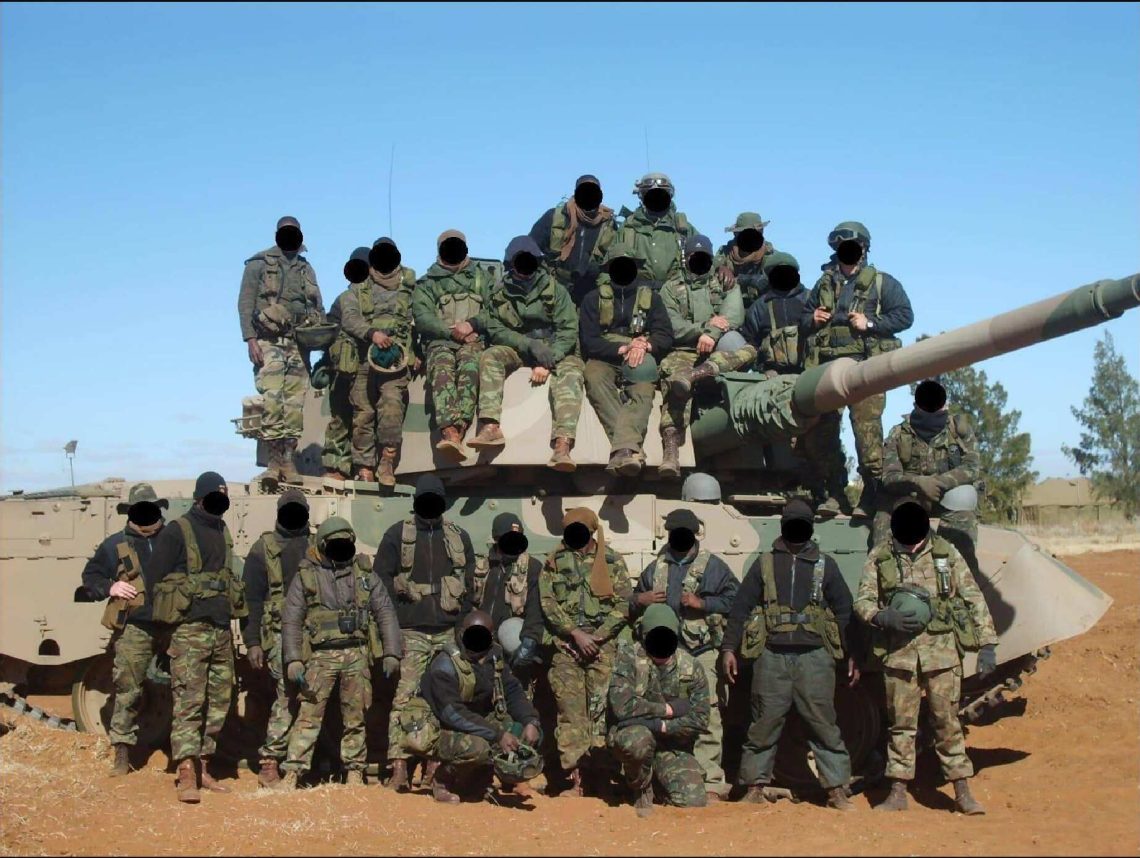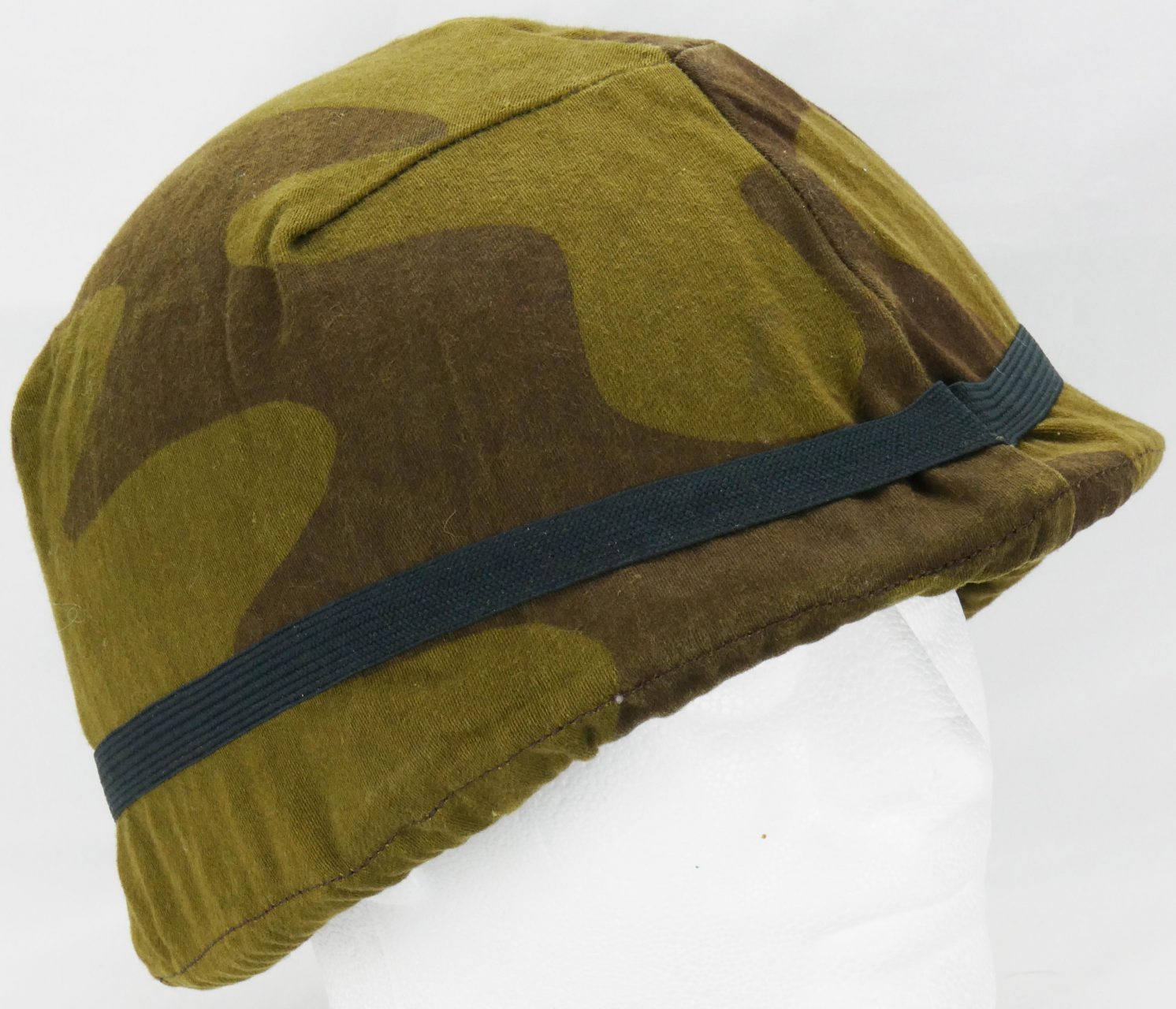These helmet covers were mainly used by the SADF Recces (Special Forces) for urban training, though a few were used on operations. The camouflage pattern is similar to what the South African Air Force painted on its Mirage fighter jets [1]. It is unclear where the covers were manufactured though they are often worn on West German manufactured helmets [2][3] and appear to be made from a moleskin-like material that some Western European forces, including the West German Bundeswehr, also used.
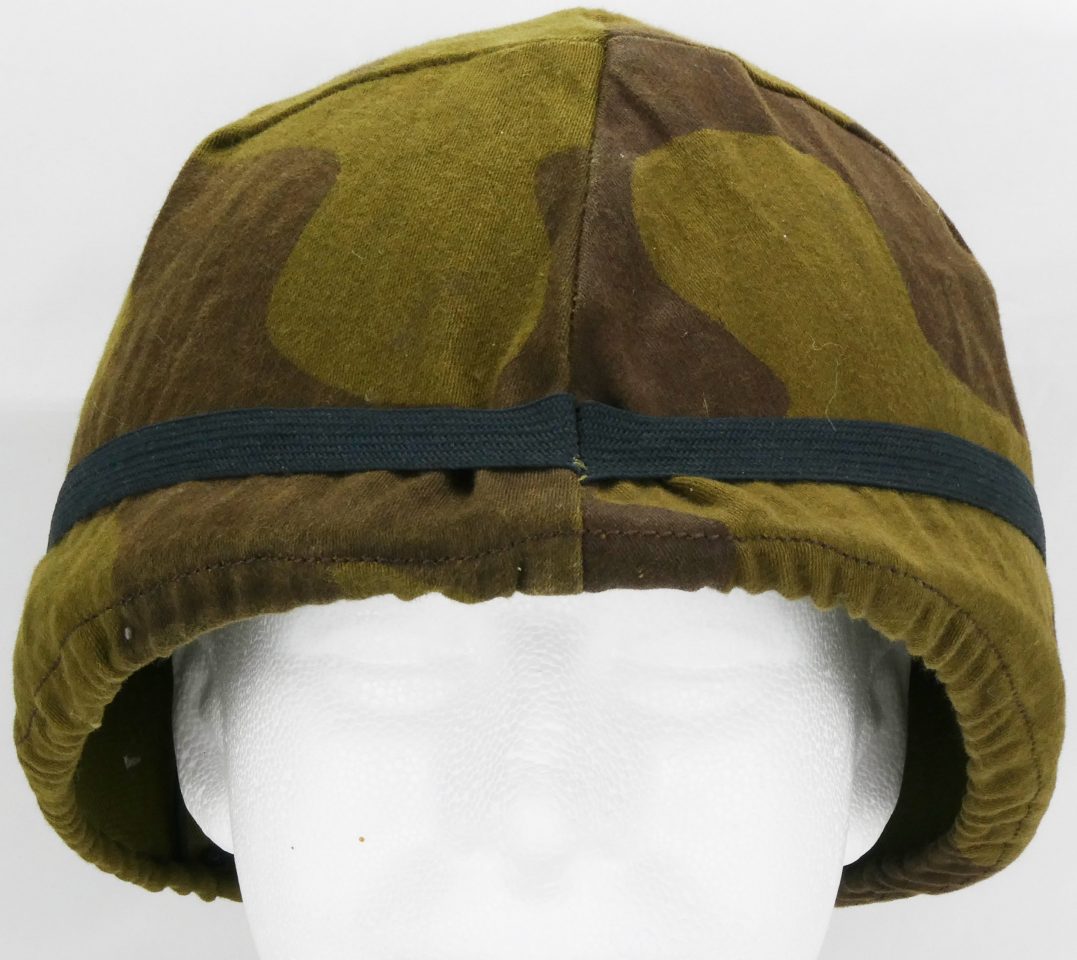
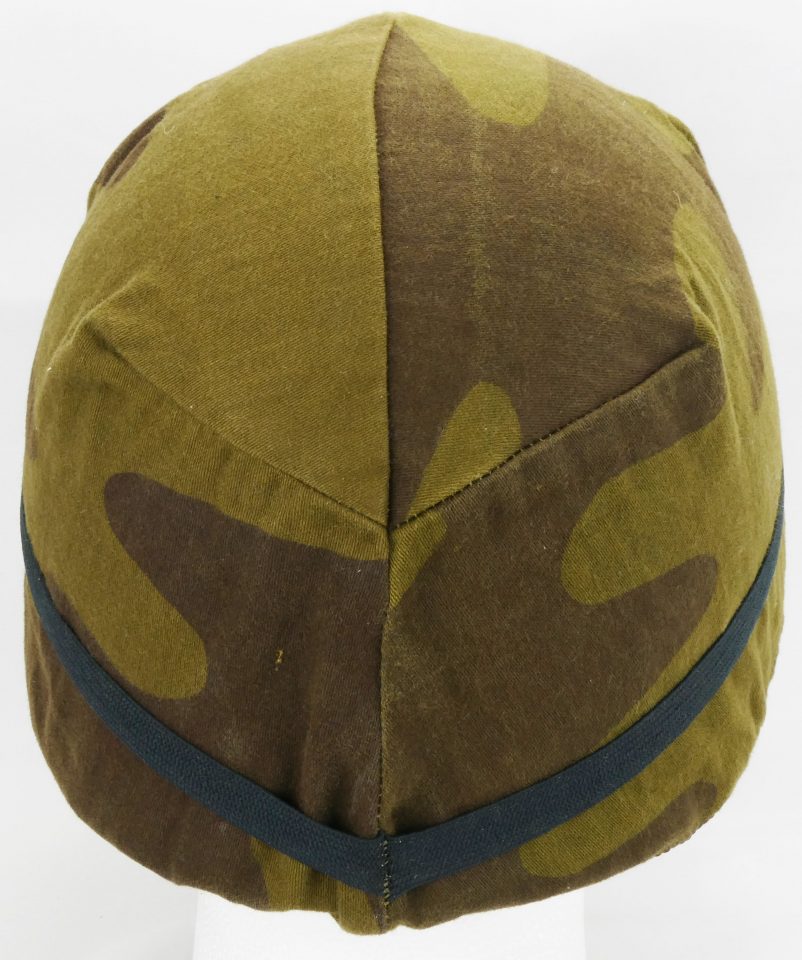
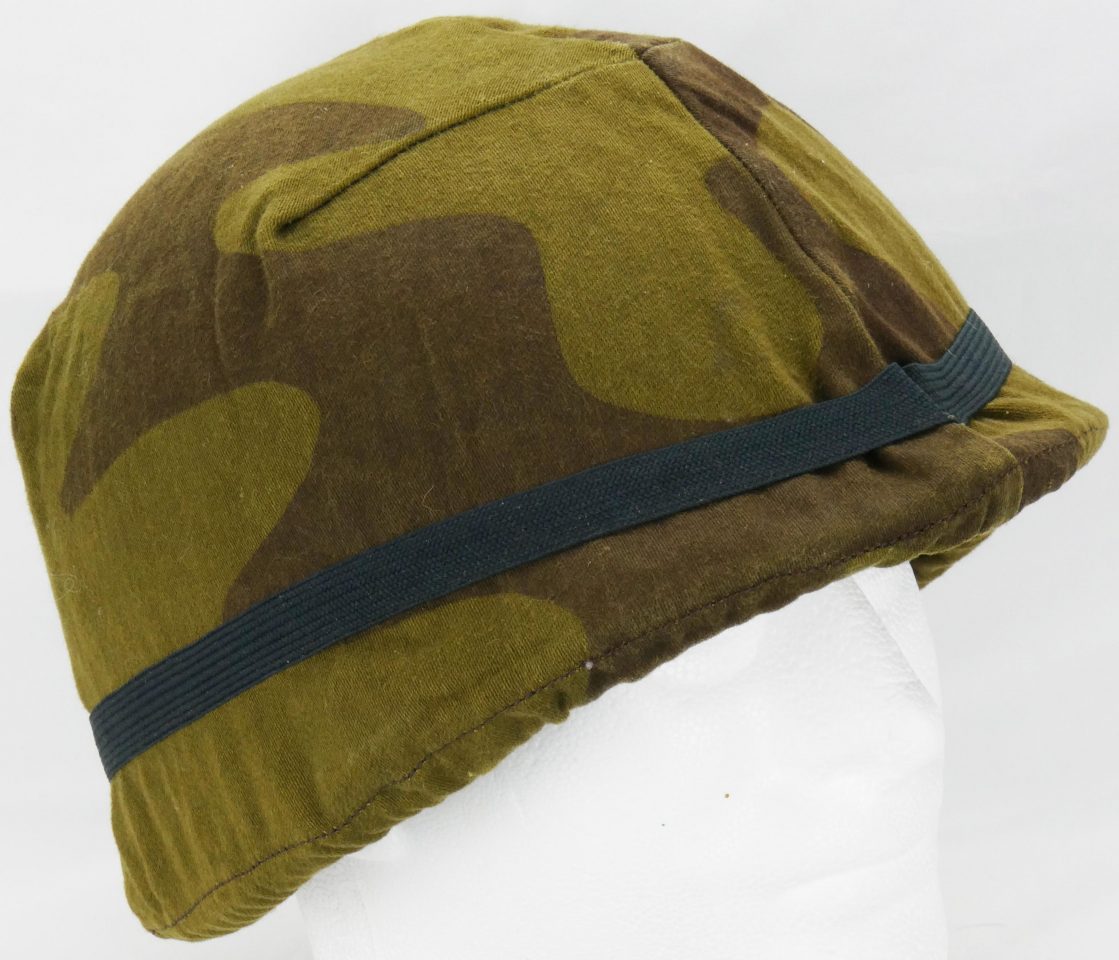
Helmet cover is displayed mounted to a US M1 helmet liner. In SADF service, a West German M1 with the paratrooper chinstrap would have been used [2][3].
Sides:
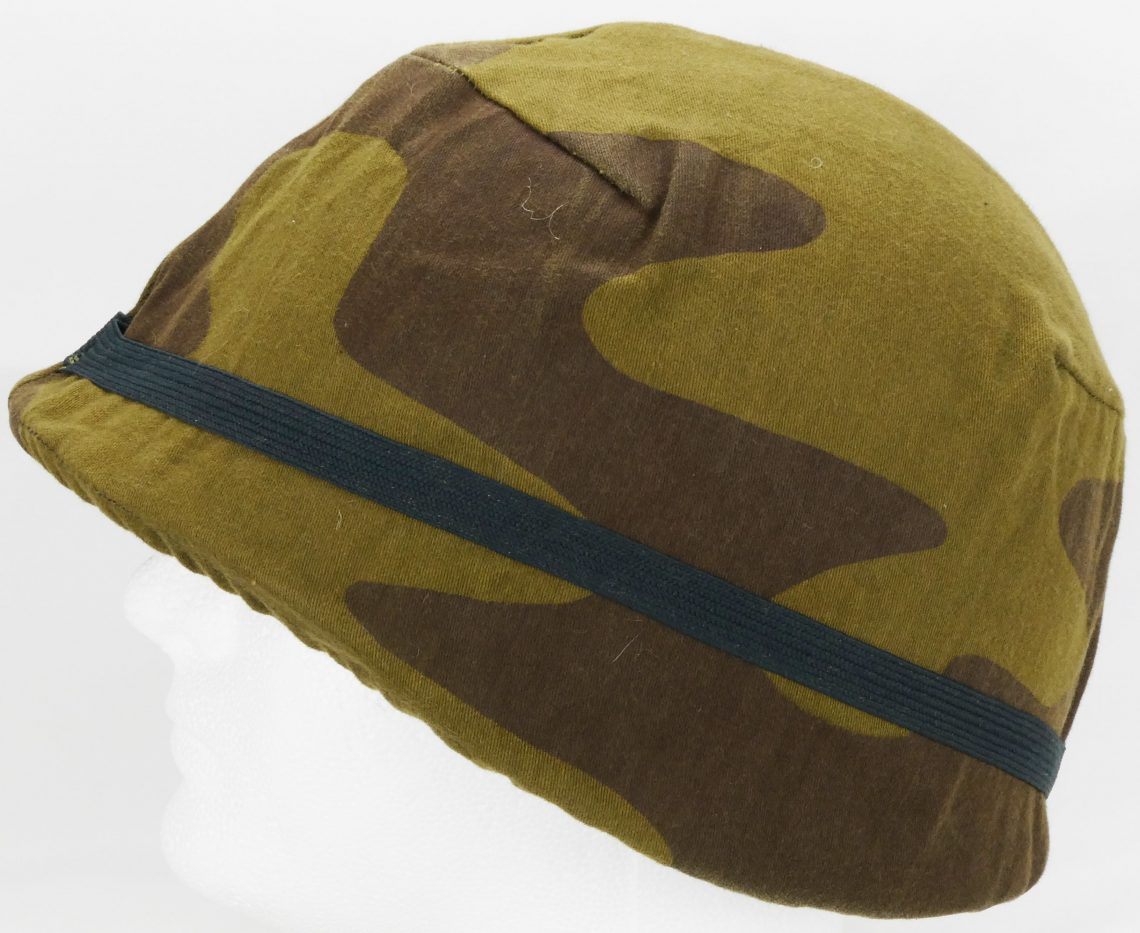
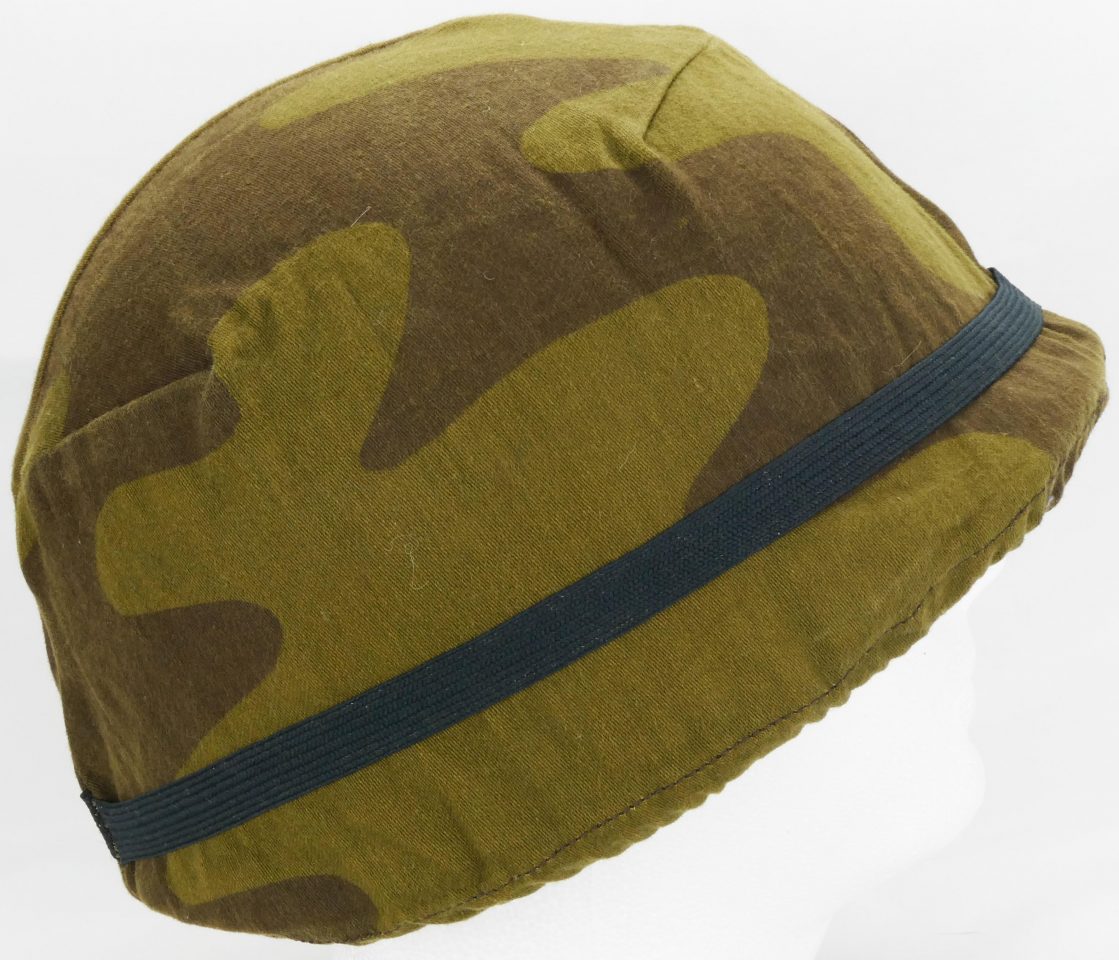
Elastic band allows cover to conform to helmet’s shape.
Top:
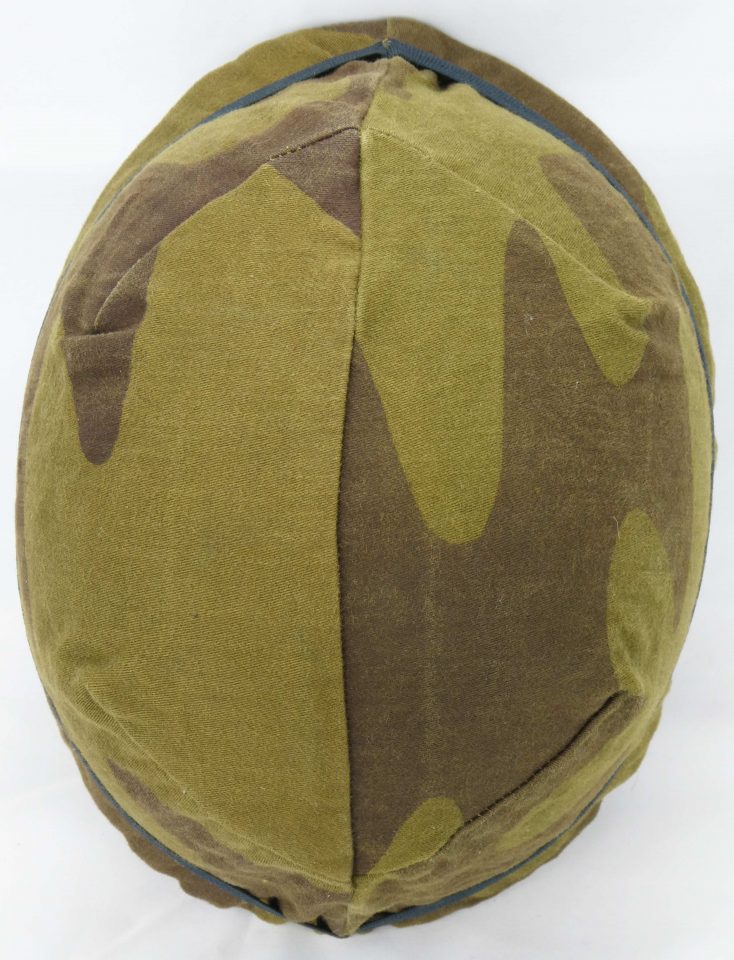
Inside:
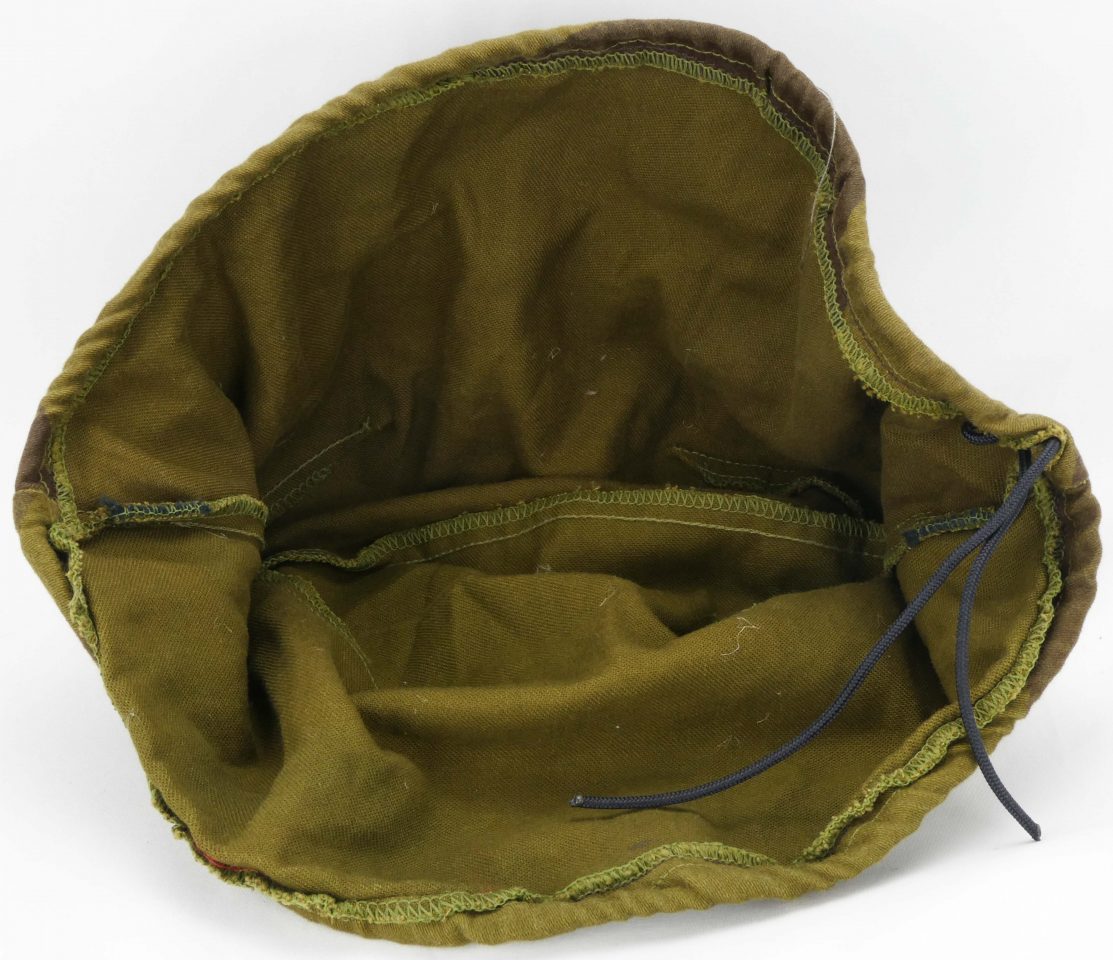
Drawstring at rim to secure cover.
Usage Photos:

There are photos of helmets with this type of cover in the book South Africa Special Forces: The Men Speak by Jonathan Pittaway and Douw Steyn on:
- Page 398 (Hot extraction practice)
- Page 414 (6 Recce in a Dakota, appears to be related in Operation Beanbag which occurred on January 29-30, 1981); the helmet cover on Page 415 appears to be made from a different twill material than the one on this page.
- Page 487 (Demolition range)
- Page 496 (Urban training)
- Page 598 (Urban team training at the Bluff in Durban)
- Page 632 (Motorbikes on urban exercise; in 1990’s section of the book, but the soldiers are wearing Nutria brown, so the picture was probably taken some time between 1990 – 1994?)
The pictures tend to be concentrated in the 1980’s section of the book, hence the date in the title.
Modern SANDF (2007):
